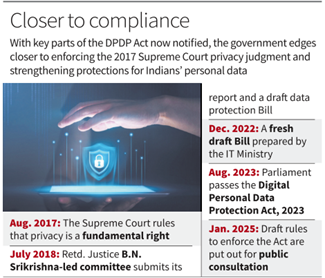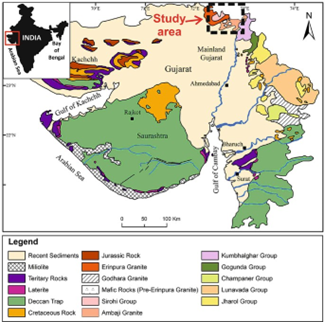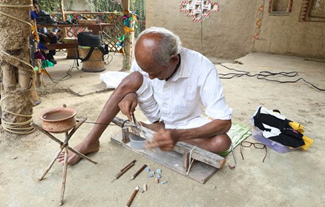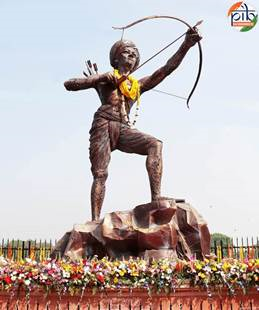Indian Society & Social Justice
Divya Kala Mela 2025:
-
- It is celebrated on 24th April in India to spread awareness about the establishment of Panchayati Raj Institution.
- The event is organised by the Department of Empowerment of Persons with Disabilities (DEPwD) under the Ministry of Social Justice & Empowerment.
- Duration: 15 November to 23 November 2025, at Lucknow University.
- Aim: Showcase products and artistic skills of “Divyang” (persons with disabilities) entrepreneurs & artisans from across India, including from Jammu & Kashmir and North-Eastern states.
- Over past 3 years, 26 such melas held; artisans from 24 states have earned business worth over ₹21 crore.
- Around 100 Divyang artisans/entrepreneurs from ~18 states/UTs will participate at this edition; product categories include handicrafts, hand-loom, eco-friendly items, packaged food, jewellery, toys etc.
- Supports “Vocal for Local” by promoting locally made products of Divyang artisans.
- Includes experience zones for various disabilities, sports and cultural performances by Divyang artists, and assistive-device displays to raise awareness and inclusion.
(PIB)
International Developments
Strategic Cyber Exercise:
-
- The National Security Council Secretariat, Government of India, in partnership with Ministry of External Affairs and National Critical Information Infrastructure Protection Centre, organized a three-day Strategic Cyber Exercise for Central Asian countries – Kazakhstan, Kyrgyz Republic, Tajikistan, Turkmenistan and Uzbekistan – from 12-14 November 2025 at New Delhi.
- The Exercise focused on equipping technical teams with advanced skills to combat increasingly sophisticated transnational cyber threats targeting the region’s critical infrastructure.
- It also successfully integrated intensive technical capacity building with skills for high-level strategic policy decision making and deliberations on future areas of collaboration.
(PIB)
Economy
Drone City and Space City:
-
- The Union Commerce & Industry Minister laid the foundation stone for a Drone City (at Orvakal, Andhra Pradesh) and a Space City (near Sriharikota).
- Drone City will be spread over ~300 acres and is envisioned to boost domestic drone manufacturing, contributing to India’s self-reliance in drone technology.
- Space City near Sriharikota aligns with India’s broader goals in the space sector, leveraging proximity to the ISRO launch site.
- To attract investments, Andhra Pradesh government offers:
- 100% GST refund (state GST) via an escrow account
- 20% reimbursement of capital investment
- This initiative supports the vision of “Swarna Andhra 2047” and “Viksit Bharat 2047”, linking regional development with national growth objectives.
(PIB)
Geography, Mapping, Ecology & Environment
Galathea Bay:
-
- Located in Great Nicobar Island (Andaman & Nicobar Islands), along the southeastern coast.
- Forms part of the Galathea National Park, which lies within the Great Nicobar Biosphere Reserve (UNESCO designated).
- Galathea River, the southernmost major river of India, drains into this bay.
- Important habitat for endemic and endangered species, including:
- Leatherback sea turtle (largest marine turtle) – a major nesting site.
- Nicobar megapode
- Saltwater crocodile
- Dugong
- Recently in news due to Great Nicobar Development Project (GNDI), including:
- A proposed international transshipment port at Galathea Bay.
- Concerns over ecological impact, displacement, and forest diversion.
- Declared as an “Eco-sensitive coastal area”; requires strict environmental scrutiny.
- Lies close to the Six Degree Channel, one of the world’s busiest maritime routes → high strategic significance for India.

(TH)
Strait of Hormuz:
-
- Context: Iran seized a Marshall Islands- flagged oil tanker as it travelled through the narrow Strait of Hormuz.
- The ship, the Talara, was travelling from Ajman, UAE, onward to Singapore when Iranian forces intercepted it.
- A narrow waterway connecting the Persian Gulf with the Gulf of Oman and Arabian Sea.
- Lies between Iran (north) and Oman–UAE (south).
- One of the world’s most strategically important chokepoints for global energy supply.
- Approximately one-fifth of global crude oil and one-third of global LNG trade passes through this strait.
- Major exporters using this route include Saudi Arabia, Iraq, UAE, Kuwait, Qatar, and Iran.
- The strait’s narrowest width is only about 33 km, making it highly vulnerable to geopolitical tensions.
- Frequent area of conflict involving Iran–US tensions, tanker seizures, and military patrols.
- Critical for India due to:
- Heavy dependence on West Asian oil & gas
- Security of Indian diaspora and trade routes
- Any disruption affects global oil prices, maritime security, and India’s energy security.
- Context: Iran seized a Marshall Islands- flagged oil tanker as it travelled through the narrow Strait of Hormuz.

(TH)
39,000-year-old mammoth RNA found in Siberian permafrost:
-
- Scientists have recovered and sequenced the oldest known RNA from a 39,000‑year-old woolly mammoth (named Yuka) preserved in Siberian permafrost.
- The RNA came from muscle tissue, giving a snapshot of which genes were active in Yuka just before death.
- The gene‑expression profile showed signals of cellular stress, possibly linked to trauma (cuts on its hide hint at a cave‑lion attack).
- These finding challenges previous assumptions because RNA was thought to degrade within minutes or hours after death, but the permafrost conditions preserved it.
- The discovery expands the toolkit for studying ancient life: besides DNA and proteins, now ancient RNA can give insights into real-time biology (gene activity), not just genetic code.
- The study suggests potential for recovering RNA from other ancient or historic specimens, under favorable preservation conditions.

(IE)
Science & Technology
Man-portable Autonomous Underwater Vehicles:
-
- DRDO’s Naval Science & Technological Laboratory (NSTL), Visakhapatnam has developed a next-generation Man-portable Autonomous Underwater Vehicle (MP-AUV) system for mine-countermeasure missions.
- The system consists of multiple AUVs equipped with side-scan sonar and underwater cameras for real-time detection and classification of mine-like objects.
- It uses deep-learning based target-recognition algorithms to enable autonomous classification, thereby reducing operator workload and mission time.
- Integrated with robust underwater acoustic communication for inter-AUV data exchange, enhancing situational awareness during operations.
- Significance for India:
- Boosts indigenous capability in naval mine-warfare and maritime defence.
- Reduces operational risk and logistic footprint for mine-countermeasure operations.
- Aligned with “Make in India” and self-reliance in defence technology in maritime domain.

(PIB)
Defence & Security
Digital Personal Data Protection Act, 2023:
-
- Enacted by Parliament on 11 August 2023, the DPDP Act establishes a comprehensive framework for protecting digital personal data, setting out the obligations of entities handling such data (Data Fiduciaries) and the rights and duties of individuals (Data Principals).
- It is an Act to provide for the processing of digital personal data in a manner that recognises both the right of individuals to protect their personal data and the need to process such personal data for lawful purposes and for matters connected therewith or incidental thereto.
- The DPDP Rules, 2025 are also a signi cant step forward in compliance with the Supreme Court’s 2017 K.S. Puttaswamy v. Union of India judgment a rming the right to privacy.

(TH)
History, Art & Culture
Gujarat’s Ambaji marble gets GI tag for its quality:
-
- Context: Marble from Ambaji, Guja rat’s prominent pilgrimage site and Shaktipeeth, has been awarded the Geo graphical Indication (GI) tag for its high-quality white stone.
- The Geographical Indications Registry under the Ministry of Commerce and Industry has granted the tag in the name of the Ambaji Marbles Quarry and Factory Association in Banaskantha district.
- It is known for its shine and beauty, has long been used in construction of religious sites.
- It dates back 1,200 1,500 years, around the time the Dilwara Jain Temple in Mount Abu was constructed.
- Known for its strength and high calcium content.
- A GI tag recognises products that possess unique qualities or characteristics linked to their geographical origin.

(TH)
NMCM Bead-Making Workshop:
-
- The workshop is organised under the National Mission on Cultural Mapping (NMCM) and focuses on stone-bead making craft.
- The theme of the keynote address: “Indian Stone Beads: Interlacing Craft, Culture, and Technology”.
- Objectives:
- Link traditional craft practices with cultural heritage and modern technological insights.
- Empower artisans practising stone-bead making by highlighting craft value as part of India’s cultural legacy.
- Highlights India’s intangible cultural heritage and craft ecosystems.

(PIB)
Janjatiya Gaurav Divas:
-
- Janjatiya Gaurav Divas (Tribal Pride Day) is celebrated on 15 November, in memory of Birsa Munda, a tribal freedom fighter.
- The year 2024-25 is being observed as Janjatiya Gaurav Varsh, marking 150 years of Birsa Munda’s birth.
- As part of the celebrations, 11 Tribal Freedom Fighters’ Museums will be set up by the Ministry of Tribal Affairs in different states to preserve the history of tribal uprisings and leaders.
- The government is promoting tribal art, language, and cultural traditions via digital initiatives such as Adi Sanskriti and Adi Vaani.
- The broader goal: strengthen tribal identity, preserve indigenous knowledge systems, and highlight the role of tribal communities in India’s anti-colonial struggle.

(PIB)
Terms in news
Data Fiduciary:
-
- It means any person who alone or in conjunction with other persons determines the purpose and means of processing of personal data;
(TH)
Data Principal:
-
- It means the individual to whom the personal data relates and where such individual is—
a) a child, includes the parents or lawful guardian of such a child;
b) a person with disability, includes her lawful guardian, acting on her behalf;
(TH)
Personalities in news
Irawati Karve:
-
- She was a pioneering Indian sociologist and anthropologist.
- She studied in Berlin during the rise of Nazism but rejected racist theories of white superiority.
- She founded and headed the Joint Department of Sociology & Anthropology at Deccan College (Pune) from 1939.
- Her research focused on caste, kinship, and anthropometrics, and she introduced the concept of a “caste cluster” as an endogamous group linked by kin networks.
- Key works: Hindu Society: An Interpretation, Kinship Organisation in India, and Yuganta.
- In policy, she influenced women’s rights: her essay The Indian Woman (1975) contributed to thinking around women’s empowerment.
- Her legacy is institutionalized in Savitribai Phule Pune University: the Anthropology Museum there was renamed after her.
- The Irawati Karve Marga in Pune is a tribute to her lasting impact.

(IE)
PRACTICE MCQ’S
Q1. Consider the following statements regarding Galathea Bay:
1. It is located on the southeastern coast of Great Nicobar Island.
2. It is an important nesting site for the Leatherback sea turtle.
3. It lies close to the Ten Degree Channel.
Which of the above statements are correct?
a) 1 and 2 only
b) 2 and 3 only
c) 1 and 3 only
d) 1, 2 and 3
Answer: A
Explanation:
-
- Galathea Bay is on the southeastern coast of Great Nicobar.
- It is a major nesting site for Leatherback turtles.
- It lies near the Six Degree Channel, not the Ten Degree Channel.
Q2. With reference to the ‘Divya Kala Mela’, consider the following statements:
1. It is organised by the Department of Empowerment of Persons with Disabilities under the Ministry of Social Justice & Empowerment.
2. The event aims to promote products made exclusively by women self-help groups.
3. It supports the government’s “Vocal for Local” initiative.
Which of the above statements is/are correct?
a) 1 and 3 only
b) 2 and 3 only
c) 1 only
d) 1, 2 and 3
Answer: A
Explanation:
Statement 1 is correct (Organised by DEPwD, MoSJE)
Statement 2 is incorrect (It showcases products by Divyang artisans/entrepreneurs, not exclusively SHGs)
Statement 3 is correct (Promotes locally made products, “Vocal for Local”)
Q3. Q. With reference to important global maritime chokepoints, consider the following pairs:
| Chokepoint | Connects |
|---|---|
| 1. Strait of Hormuz | Persian Gulf and Gulf of Oman |
| 2. Strait of Malacca | Red Sea and Arabian Sea |
| 3. Bab-el-Mandeb | Red Sea and Gulf of Aden |
Which of the above pairs are correctly matched?
a) 1 only
b) 1 and 3 only
c) 2 and 3 only
d) 1, 2 and 3
Answer: B
Explanation:
-
- Strait of Hormuz correctly connects Persian Gulf, Gulf of Oman.
- Strait of Malacca connects Indian Ocean (Andaman Sea), South China Sea, not Red Sea.
- Bab-el-Mandeb connects Red Sea, Gulf of Aden.
Q4. With reference to the newly developed Man-Portable Autonomous Underwater Vehicles (MP-AUVs) by DRDO, consider the following statements:
1. They are designed primarily for underwater mine-countermeasure operations.
2. They use deep-learning based algorithms for autonomous target recognition.
3. They rely exclusively on satellite communication for inter-vehicle data exchange.
Which of the above statements are correct?
a) 1 and 2 only
b) 2 and 3 only
c) 1 and 3 only
d) 1, 2 and 3
Answer: A
Explanation:
-
- Statement 1 is correct (Built for mine-countermeasure missions)
- Statement 2 is correct (Uses deep-learning based recognition algorithms)
- Statement 3 is incorrect (Uses underwater acoustic communication, not satellite links)
Q5. Consider the following statements:
1. The stone-bead making craft in India has archaeological roots dating back to the Indus Valley Civilization.
2. The craft traditionally uses stones such as agate and carnelian, shaped through heating, drilling, and polishing techniques.
Which of the above statements is/are correct?
a) 1 only
b) 2 only
c) Both 1 and 2
d) Neither 1 nor 2
Answer: C
Explanation:
-
- Statement 1 is correct: Excavations at Harappan sites like Lothal show advanced bead-making workshops, proving very ancient roots.
- Statement 2 is correct: Traditional bead-making uses agate, carnelian, jasper, etc., processed through heat-treatment, drilling, and polishing, a technique preserved in regions like Khambhat (Gujarat).
Q6. Consider the following statements about Birsa Munda:
1. He was a tribal freedom fighter and religious leader who led the Ulgulan (Munda Rebellion) against British colonial rule in the late 19th century.
2. He played a key role in the passage of the Chotanagpur Tenancy Act, which protected tribal land rights.
Which of the statements given above is/are correct?
a) 1 only
b) 2 only
c) Both 1 and 2
d) Neither 1 nor 2
Answer: C
Explanation:
-
- Statement 1 is correct: Birsa Munda led the Ulgulan rebellion (1899–1900) against British exploitation in Chotanagpur.
- Statement 2 is correct: His movement influenced the Chotanagpur Tenancy Act (1908), aimed at protecting tribal land rights.

